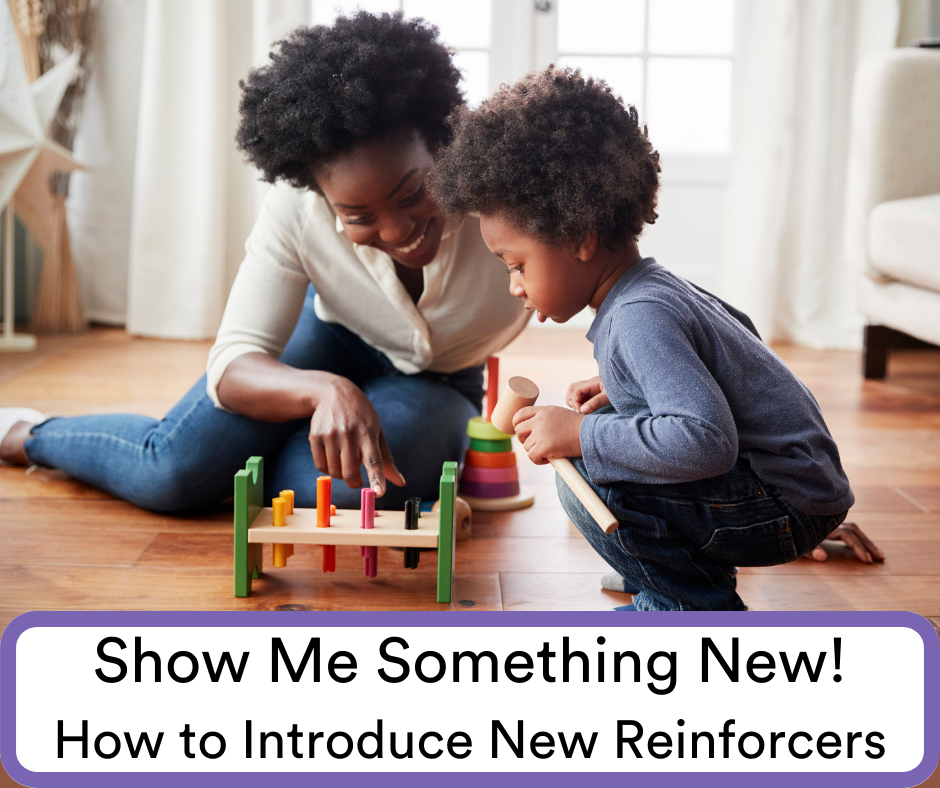
By Dana Reinecke, PhD, BCBA-D
Resistance to change and preference for sameness are core features of autism. It can be natural to avoid new things, especially if change is overwhelming. While this may be more comfortable for the individual in the short term, there are long-term consequences, including difficulty in contacting new reinforcers and reduced access to learning opportunities. Over time, the individual may lose out on potentially pleasant and exciting experiences, even becoming bored and unmotivated by the things they previously really enjoyed.
How can we help with this situation?
We can start by looking at how frequently new experiences are offered to the individual. If they are pretty resistant to new things and have demonstrated that in the past, their loved ones, staff, and teachers may have taken a step back and started to avoid even offering new experiences, toys, activities, food, people, or settings. While we would not want to deliberately upset someone, we can work towards making opportunities for exposure to new things available in a gentle, supportive way.
Plan New Things
For some, exposure to new things can be made more tolerable by letting them know what is going to happen ahead of time, and explaining what the expectations will be. For example, “Tomorrow we are going to put on a new movie when you finish your homework. You can watch it if you want, or you can play with your toys. It’s totally up to you!” Or, a picture of a new movie might be added to the person’s activity schedule and the same message reviewed with them using fewer words.
Some families might choose to establish a “try new things” day every week. The whole family can get in on it, to provide encouragement and modeling. For example, Mom, Dad, and child might each pick one new food to try every Saturday. Or, everyone in the family can decide on something new that they want to learn before some milestone occurs. For example, each family member could plan to learn about one new animal or dinosaur before an upcoming holiday.
Pair Reinforcers
Exposure to new things can also be eased by pairing the new item or activity with something (or someone) that is already reinforcing. A favorite aunt or uncle who brings over and plays with a new toy with great enthusiasm may draw in a child’s attention and willingness to engage more quickly than if the toy is just handed to the child or left for them to discover. Similarly, an older child might be more willing to try a new interest like playing a sport or learning a craft if something else that is pleasurable is also happening, like a favorite snack, music, or friend to do the new activity with.
In a similar way, new activities can be combined with old favorites. For some children who are very attached to particular characters, it can be helpful to introduce their beloved characters into new activities. For example, a child who loves Elmo from Sesame Street is more likely to be interested in a new activity like coloring if the coloring books include Elmo pictures. We can also get creative with mixing interests from different places. An individual who really loves trains might begin to develop interests in geography by learning about train routes through different states. The conversation can gradually be guided from trains to the places where the trains run, to eventually interesting facts about those places.
Be Patient
Exposure to new items and activities does not need to include any requirements to engage with the new items and activities. It may take several exposures before an individual is even willing to look at or start to engage with something new. This is okay and it’s preferable to let interest and willingness occur naturally, even if slowly. Trying to force engagement will likely only make the new activity or item aversive and something to be avoided, which is definitely not what we want to do. Patience is key, along with a willingness to continue to increase exposure to new items and activities. Not every new thing will wind up being a favorite or even enjoyed, but over time some likely will become preferred. More important, newness and change will become more tolerable, opening the person up to worlds of possibility.
About the Author
Dana Reinecke, Ph.D., BCBA-D is a New York State Licensed Psychologist and Licensed Behavior Analyst (LBA). Dana is an Assistant Program Director in the Applied Behavior Analysis department at Capella University, overseeing the PhD in Behavior Analysis program and mentoring doctoral learners. She is also co-owner of SupervisorABA, an online platform for BACB supervision curriculum and documentation. Dana has provided training and consultation to school districts, private schools, agencies, and families for individuals with disabilities. She has published her research in peer-reviewed journals, written chapters in published books, and co-edited books on ABA and autism. Current areas of research include use of technology to support students with and without disabilities, self-management training of college students with disabilities, and online teaching strategies for effective college and graduate education. Dana is a Past President of the New York State Association for Behavior Analysis (NYSABA).
